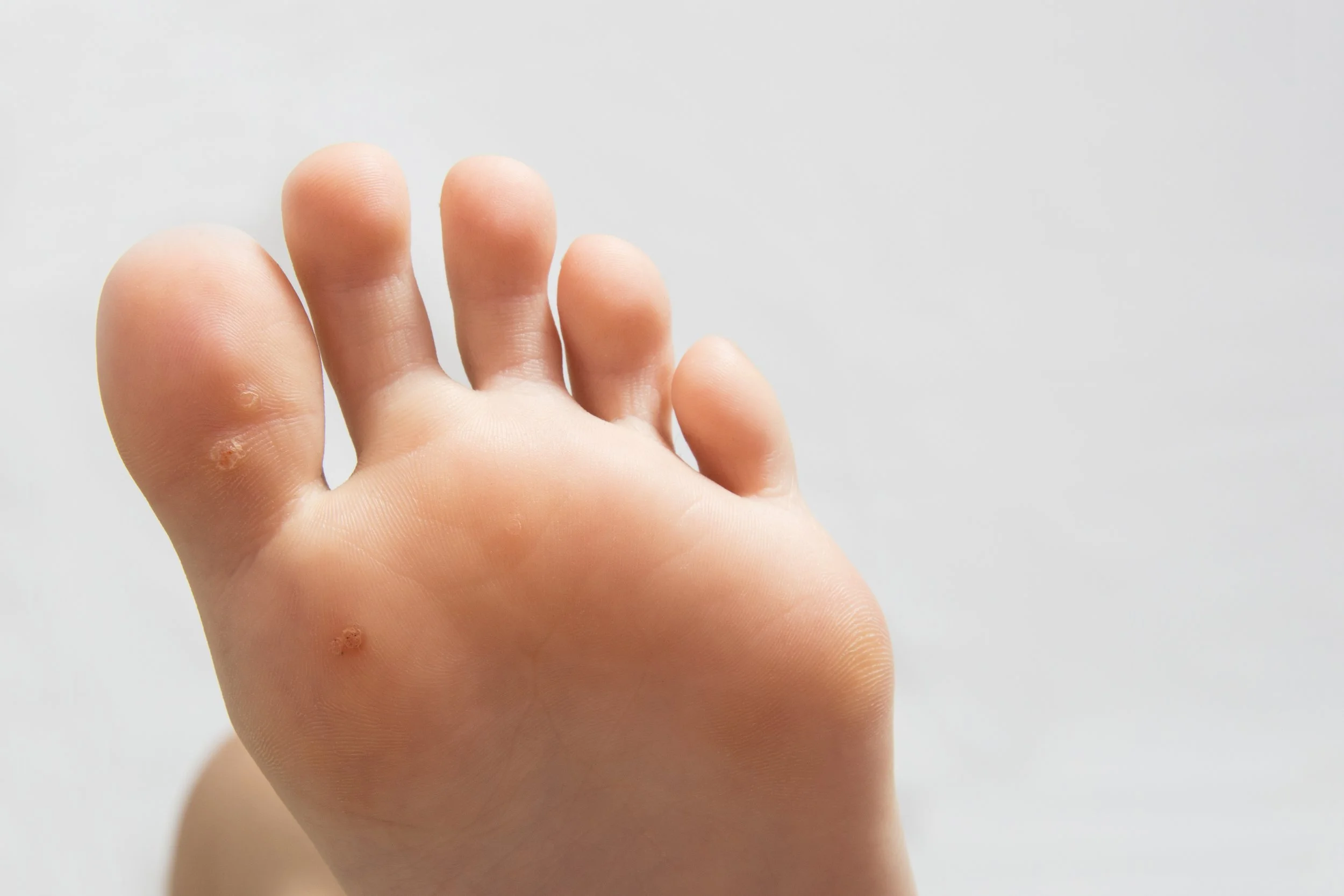Understanding Verrucas: Causes, Treatment & When to Seek Help
Verrucas are a common foot concern we see regularly in clinic. While often harmless, they can be stubborn, painful, and sometimes quite distressing—especially when they don’t respond to over-the-counter treatments. Let’s take a closer look at what they are, why they appear, and what options you have for treatment.
What is a Verruca?
A verruca (also known as a plantar wart) is a type of wart that appears on the sole of the foot. It’s caused by the human papilloma virus (HPV), which enters the skin through tiny cracks or abrasions. Because the virus thrives in moist environments, it’s often picked up in places like swimming pools, changing rooms, or shared showers.
How to Spot a Verruca
A small, rough patch of skin on the sole of the foot
Black dots in the centre (these are tiny blood vessels)
Pain when walking or pressure is applied
May be singular or appear in clusters (mosaic verrucae)
Unlike corns or calluses, verrucae tend to disrupt skin lines, and they can be quite painful when pinched or walked on.
Why Some Verrucas Won’t Go Away
In many people—particularly children—verrucae resolve on their own as the immune system fights the virus. However, in adults or those with reduced immune responses, verrucae can persist for months or even years, becoming painful or spreading.
Some common reasons verrucae linger:
A weak immune response
Repeated pressure or trauma to the area
Ineffective or inconsistent home treatments
💡 When to Seek Professional Help
If your verruca is:
Painful or affecting the way you walk
Not improving with pharmacy treatments
Spreading or multiplying
Present for more than 6–12 months
…it’s time to book an appointment with a podiatrist. Treating verrucae early can prevent discomfort and further spread.
🔬 New Treatment: Plasma Therapy with the Verruca Pen
At Bailey Podiatry & Reflexology, we now offer plasma-based verruca treatment using the Verruca Pen – a precise, targeted method for treating even the most stubborn verrucae.
✨ Focused plasma energy gently cauterises the tissue
🧬 Stimulates the immune response to clear the virus
👣 Minimal discomfort, no downtime, and no harsh chemicals
This is a great option for those who’ve tried other methods without success.
🦶 Other Treatment Options
Depending on your verruca, we may also discuss:
Debridement (removal of overlying hard skin)
Taping
Topical treatments or acids
Needling (for suitable cases)
Every patient is different, so we tailor your treatment plan to suit your needs and health history.
🗓️ Book a Consultation
If you’re unsure whether you have a verruca or just want expert advice, we’re here to help. You’ll receive a thorough assessment and guidance on the best path forward.
Let’s get you back on your feet—pain-free and confident again.
All treatments are delivered by HCPC-registered podiatrist Michelle Bailey in a clean, calm clinical setting.
📞 Call us on 016977 2191
💻 Book online: https://www.baileypodiatry.co.uk/book

